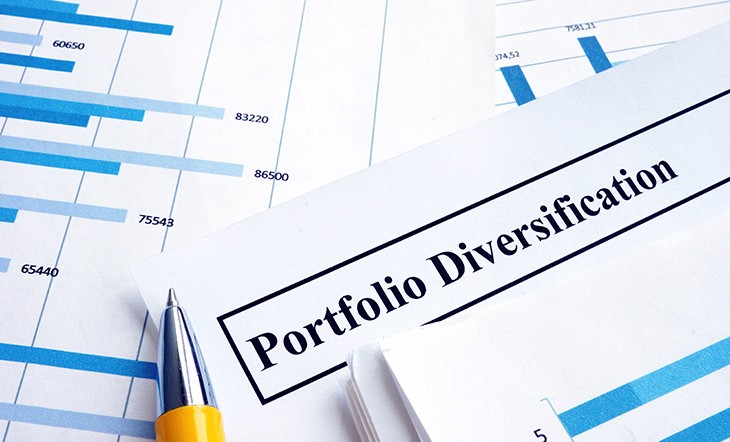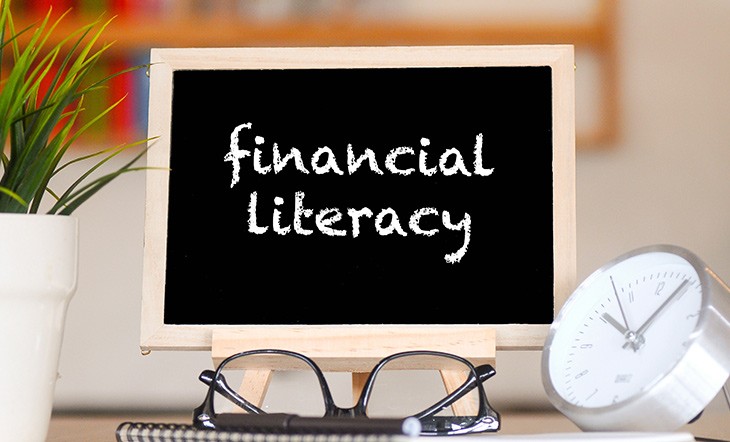Retirement Strategies That May Help Survive Financial Risks
.jpg)
Preparing for financial risks in retirement is a necessity more than just a prudent choice. As individuals approach retirement, the stakes become higher, with the need to ensure that savings will last throughout their retirement years. The key to a secure and comfortable retirement lies in proactive planning. By anticipating potential financial risks and developing strategies to mitigate them, retirees can protect their retirement funds from unexpected economic challenges. This preparation is vital for maintaining the lifestyle and peace of mind after a lifetime of work.
The economy is inherently unpredictable, with market fluctuations, inflation rates, and interest rates that can significantly impact retirement savings. Recent history has shown that economic downturns, such as the financial crisis of 2008 or the market volatility during the COVID-19 pandemic, can rapidly erode the value of retirement portfolios. Additionally, factors like rising healthcare costs, changes in tax laws, and increasing life expectancies add layers of complexity to retirement planning. Given these uncertainties, it is crucial to adopt robust strategies that can safeguard retirement savings against these risks, ensuring that retirees are protected against the worst. This approach allows for greater financial resilience, helping retirees weather economic storms and sustain their retirement income over the long term. Consider consulting with a professional financial advisor who can help create a personalized retirement plan based on your future financial needs and goals.
This article covers top retirement strategies that can weather-proof your retirement fund and allow you to live with peace of mind during the later years of your life.
Below are some retirement strategies that may help survive financial risks and uncertainties during retirement:
1. Diversify your investment portfolio
In retirement, ensuring financial stability and growth is important, especially as market conditions and personal circumstances may fluctuate unpredictably. Well-rounded retirement plans to survive financial uncertainty should include a diversified portfolio that balances growth potential with risk management. Incorporating a mix of traditional assets like stocks and bonds, alongside alternative investments such as real estate, commodities, and infrastructure funds, can allow retirees to build a robust financial foundation. Each of these instruments plays a specific role in protecting and growing retirement savings, helping to mitigate risks like inflation and market volatility while also providing steady income streams.
- Stocks: Stocks play a crucial role in a retirement portfolio by providing the potential for significant growth. Over time, equities tend to outperform other asset classes, making them essential for keeping up with inflation and ensuring that your retirement savings grow. While stocks come with higher risk, this risk is often necessary to achieve the long-term growth needed to maintain purchasing power throughout retirement.
- Bonds: Bonds add stability to a retirement portfolio by acting as a cushion against market volatility. They typically provide a reliable income stream through interest payments, which is particularly important during market downturns when the value of stocks might decline. Bonds are generally less risky than stocks, making them a key component for preserving capital and ensuring that retirees can cover their essential expenses even in uncertain economic times.
- Real estate: Real estate provides a steady income stream, often through rental income, and tends to appreciate over time. This appreciation can increase the overall portfolio value, offering protection against inflation. Real estate investments can be made through direct ownership of properties or via real estate investment trusts (REITs), which allow investors to benefit from real estate exposure without the need for active property management.
- Commodities: Commodities, such as gold and agricultural products, act as a hedge against inflation and economic downturns. These tangible assets often increase in value when inflation rises, thereby protecting the purchasing power of your retirement savings. While commodities can be volatile, their inclusion in a portfolio provides diversification and an additional protection layer during economic stress.
- Infrastructure funds: Infrastructure funds invest in essential services like utilities, transportation, and energy, which are typically less affected by economic cycles due to their inelastic demand. These investments offer stability and protection against inflation, as the services provided by the infrastructure sector are always in demand, regardless of economic conditions. While infrastructure funds may involve higher fees and require a long-term commitment, they can provide a steady income and reduce the overall risk in a retirement portfolio.
It is noteworthy that while alternative investments can diversify and strengthen your portfolio, they come with their own set of risks. Liquidity issues are common, as selling these assets quickly at their full value can be challenging. Valuation challenges may also arise, especially with assets like real estate or commodities, where prices can fluctuate based on factors like market sentiment or geopolitical events. Additionally, alternative investments often come with higher fees and management costs, which can eat into returns. Therefore, it’s essential to carefully assess these risks and determine whether the potential rewards align with your overall retirement strategy.
2. Plan for inflation
One of the most significant risks retirees face is inflation eroding their purchasing power over time. Here are some ways to combat this risk:
a. Make inflation-adjusted withdrawals
An effective way to counter inflation is to adjust withdrawals annually based on inflation. For instance, starting with a 4% withdrawal rate and then adjusting the amount each year to reflect inflation can help maintain your standard of living. Without these adjustments, the fixed income from retirement savings could buy less each year, potentially leading to financial strain in later years.
b. Invest in inflation-protected securities
Treasury Inflation-Protected Securities (TIPS) and other inflation-linked investments are excellent tools for safeguarding against inflation. TIPS are government bonds that adjust their principal value based on the inflation rate, providing a guaranteed return that outpaces inflation. This makes them a reliable option for retirees looking to preserve their purchasing power. Alongside TIPS, Series I bonds and other inflation-protected assets can serve as a buffer against rising prices, ensuring that your retirement savings retain their value over time.
c. Consider investing in real assets
Real assets, such as real estate and commodities, offer another layer of protection against inflation. Real estate typically appreciates over time and can generate rental income, which often increases with inflation. Commodities like gold, oil, and agricultural products tend to rise in value when inflation is high, providing a hedge against declining purchasing power. Including these assets in your portfolio can help balance the effects of inflation, ensuring that your retirement income keeps pace with the cost of living.
3. Manage healthcare costs
Healthcare costs are one of the most significant expenses in retirement, and planning for them can make all the difference in the quality of life you will lead in retirement. Health Savings Accounts (HSAs) are a tax-advantaged way to save for medical expenses. Contributions to HSAs are tax-deductible, the funds grow tax-free, and qualified withdrawals for medical expenses are also tax-free. Long-term care insurance is another essential tool, covering services like nursing home care, home health care, and personal care that Medicare may not fully cover. Proper Medicare planning, including understanding the differences between traditional Medicare and Medicare Advantage plans, can help retirees manage out-of-pocket expenses and avoid financial surprises.
Medicare Advantage plans offer additional benefits beyond traditional Medicare, including dental coverage, vision, and hearing care, which can significantly reduce out-of-pocket costs. These plans often have lower premiums and provide access to a broader range of services. However, they may come with network restrictions and higher out-of-pocket maximums, so it’s essential to evaluate whether the benefits align with your healthcare needs and lifestyle. For retirees who travel frequently or have specific healthcare requirements, understanding the nuances of Medicare Advantage versus traditional Medicare and supplemental plans (Medigap) is vital in making an informed decision.
SPONSORED WISERADVISOR
4. Adopt flexible withdrawal strategies
Traditional withdrawal strategies, such as the 4% rule, may not be sufficient in all economic climates. A dynamic withdrawal rate adjusts based on market performance and personal financial needs, offering greater flexibility and protection for your retirement savings. For instance, during economic downturns, you might reduce your withdrawal rate to preserve capital, while in more prosperous times, you could increase your rate to take advantage of higher returns. This approach helps ensure that your retirement funds last longer, reducing the risk of depleting your savings prematurely.
Moreover, retirement doesn't necessarily mean the end of earning potential. If your financial situation requires it, consider supplementing your income with part-time work, freelancing, or consulting. This additional income can help bridge gaps during periods of low market returns or rising expenses, reducing the pressure on your retirement savings. Also, generating extra income can provide a psychological boost, helping you stay engaged and connected during retirement.
5. Mitigate interest rate risks
Interest rates can significantly impact the performance of fixed-income investments, such as bonds. When interest rates rise, the value of existing bonds typically falls, leading to potential losses if you need to sell them before maturity. To manage this risk, consider strategies like laddering bond maturities, where you invest in bonds with staggered maturity dates. This approach allows you to reinvest maturing bonds at higher interest rates during periods of rising rates, balancing the impact on your overall portfolio.
Annuities can also play a crucial role in providing a stable income stream in retirement while managing interest rate risks. Fixed annuities offer a guaranteed payout, which can be particularly valuable when interest rates are low, as they protect against the risk of declining income from other investments. Variable annuities, on the other hand, offer the potential for higher returns by investing in a portfolio of assets, though they come with more risk. Including annuities in your retirement strategy can provide a dependable income source that isn't directly affected by market fluctuations.
6. Prepare for longevity
Planning for a longer-than-expected life span is crucial to ensure your retirement savings last. It's important to consider your health history, lifestyle, and family longevity when estimating how long you might live. For married couples, planning for the joint longevity of both spouses is essential, as one spouse may outlive the other. By extending your financial planning timeline, you can better prepare for a comfortable retirement without the fear of outliving your assets.
Delaying Social Security benefits until age 70 can also significantly increase your lifetime income. Social Security benefits grow by approximately 8% annually for each year you delay claiming them past your full retirement age. This delayed approach acts as a form of longevity insurance, ensuring a higher income later in life when other resources may be depleted. For many retirees, this strategy provides a vital safety net against the financial risks associated with a longer life.
7. Protect against market risks
Market downturns can significantly impact your retirement portfolio, especially if you're heavily invested in stocks. One effective strategy to protect your assets during these periods is to maintain a portion of your portfolio in bonds or cash. Bonds, particularly government or high-quality corporate bonds, tend to be more stable than stocks and can provide a buffer against market volatility. Cash or cash equivalents, like money market funds, offer liquidity, allowing you to cover expenses without selling stocks at a loss during a market downturn. This approach ensures that you can wait out the downturn and sell your equity investments when the market recovers.
Annuities can serve as a powerful tool in managing market risk by providing a guaranteed income stream that is not dependent on market performance. Fixed annuities, in particular, offer consistent payouts, which can cover your essential expenses regardless of how the stock market performs. This steady income reduces the pressure on your investment portfolio during market downturns, allowing you to maintain a long-term investment strategy without having to liquidate assets at a loss.
8. Maintain flexibility and adaptability
Life is unpredictable, and economic conditions can change rapidly. To safeguard your retirement, it's essential to build contingency plans that can adapt to unexpected events, such as market crashes or rising inflation. This might involve setting aside an emergency fund, having a diversified portfolio that can weather different market conditions, or being open to adjusting your lifestyle and spending habits if necessary. Being prepared for contingencies ensures you're not caught off-guard and can maintain financial stability even in challenging times.
Retirement planning is not a one-time task; it requires ongoing attention and adjustments. Regularly reviewing your retirement plan allows you to align your strategies with current financial realities, such as economic changes, tax laws, or personal circumstances. By revisiting your plan annually or after major life events, you can make necessary adjustments to your asset allocation, withdrawal strategy, or insurance coverage. This proactive approach helps ensure that your retirement plan remains relevant and effective, supporting your long-term financial goals.
To conclude
Securing a comfortable retirement requires a comprehensive and flexible approach. Additionally, protecting against market risks and maintaining adaptability in your plans is vital for navigating the uncertainties of retirement. By integrating these strategies, you can avoid financial uncertainty in retirement. While these strategies can help secure your retirement, you may require additional assistance to tailor them to your specific needs and circumstances. Consider hiring a financial advisor who can provide personalized advice and help optimize your retirement plan so you may live comfortably during your retirement years.
Use the free advisor match tool to get matched with experienced financial advisors who can help you plan your retirement and tackle financial challenges and uncertainties during the later years of your life. Answer a few simple questions and get matched with 2 to 3 vetted financial advisors based on your requirements.








.jpg)













.jpg)





.jpg)


.jpg)


.jpg)















.jpg)




.jpg)





.jpg)

.jpg)







.jpg)

.jpg)






.jpg)




.jpg)

.jpg)
.jpg)



.jpg)




.jpg)

.png)
.jpg)



.jpg)

.jpg)




.jpg)


.jpg)

.jpg)

.jpg)
.jpg)
.jpg)
.jpg)

.jpg)



.jpg)




.jpg)


.jpg)
.jpg)
.jpg)
.jpg)
.jpg)

.jpg)




.jpg)
.jpg)


.jpg)
.jpg)
.jpg)
.jpg)

.jpg)

.jpg)













.jpg)

.jpg)



.jpg)




.jpg)











.jpg)



